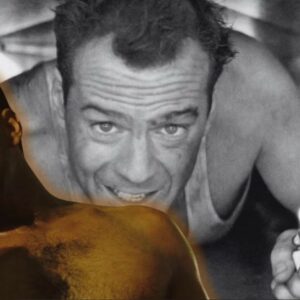Tina Turner, the Queen of Rock ‘n’ Roll, is not just an iconic artist known for her electrifying performances and emotionally charged music. Her legacy is defined by her powerful voice, stage presence, and, most significantly, her ability to tell stories through her songs. These stories transcend time, culture, and circumstance, resonating with audiences worldwide. Tina’s music is not just entertainment—it’s an emotional journey, one that takes listeners through her personal struggles, triumphs, and raw emotions. It is the narrative thread woven into her songs that makes them so compelling, captivating, and unforgettable.
Her storytelling is as electrifying as her performances, and it forms the backbone of her discography. From the defiance of “Proud Mary” to the vulnerability in “Private Dancer,” Tina’s songs stand as chronicles of resilience, empowerment, love, and self-discovery. In her voice, every lyric feels like a confession, a catharsis, or a battle cry, and listeners, regardless of their background, find something deeply personal in her music. Tina Turner’s songs have the rare ability to invite you into her world, to let you see through her eyes, feel her pain, and share in her triumphs.
The Storytelling Approach in Tina Turner’s Music
Narrative Themes: The Threads of Her Songs
Tina Turner’s music is rich in narrative themes—each song a mini-epic, telling stories that span the full spectrum of human emotion. The recurring themes of resilience, empowerment, love, betrayal, and self-discovery are the cornerstones of her storytelling style. Whether it’s a love lost, a life rebuilt, or a journey toward independence, her lyrics often paint vivid pictures of these emotions, with Tina herself playing the central character.
For example, in “What’s Love Got to Do with It?” the theme of self-reliance and questioning love takes center stage. The protagonist reflects on the complexities of love, realizing that it isn’t always the answer to her problems. This song encapsulates a broader narrative arc—one where the character evolves from romantic vulnerability to emotional independence. Similarly, “Private Dancer” explores themes of vulnerability, independence, and emotional cost—an intimate portrayal of a woman wrestling with the trade-off between her identity and the role she plays.
In songs like “We Don’t Need Another Hero,” Tina examines the need for personal empowerment amidst external turmoil. The song’s protagonist is strong and resilient, looking inward for strength rather than relying on outside heroes. This constant motif of inner strength resonates deeply with listeners, particularly women, who see Tina as both a reflection of their own struggles and a beacon of hope.
Personal Experiences: Tina’s Life in Her Lyrics
What makes Tina Turner’s music so unique is how much of her own life experience is reflected in the songs she writes and sings. Tina’s rise to fame, the personal struggles she faced in her tumultuous marriage with Ike Turner, and her ultimate triumph over adversity are all embedded in the fabric of her music. Her resilience, perseverance, and strength to break free from a controlling relationship shaped much of her songwriting.
In songs like “Better Be Good to Me,” Tina channels the emotional scars of betrayal and hardship. The character in the song demands respect, pleading for the love she deserves after enduring a long period of mistreatment. The song encapsulates the emotional weight of Tina’s past and transforms it into an anthem of empowerment.
Moreover, her autobiographical album Private Dancer reveals her journey of reinvention, a theme echoed throughout her career. Each song on the album—particularly “Private Dancer”—delivers a window into her complex emotional landscape, revealing the vulnerabilities and strengths that made her the formidable figure she became. Tina Turner’s songs are not merely personal; they are universal in their exploration of the human condition.
The Structure of Her Songs: Musical Narrative as Emotional Journey
Verse-Chorus Format: A Foundation for Emotional Impact
Tina Turner’s songs often follow a classic verse-chorus structure, which provides a sturdy framework for her narratives. The verse sets the stage, introducing the protagonist’s struggle or emotional conflict, while the chorus delivers the thematic resolution or emotional release. This structure enhances the emotional impact, making the stories even more compelling. It’s a format that allows the tension to build and then resolve, mirroring the way life itself often unfolds—periods of uncertainty followed by moments of clarity or catharsis.
In songs like “What’s Love Got to Do with It?” the verse builds a sense of introspection, where the protagonist questions the nature of love and her role within it. The chorus then offers a resolution of sorts: the realization that love may not be enough to define or shape her destiny. This push and pull between the verses and the chorus adds a sense of narrative development, where the emotional tension reaches a peak and then gives way to an emotional release.
Build-Up and Climax: Musical Arrangement and Narrative Structure
Another characteristic of Tina Turner’s storytelling approach is her use of musical arrangements to mirror the rise and fall of the narrative. Each song has moments of intensity—whether through her powerful vocal delivery, the pounding rhythm section, or the sweeping orchestral arrangements—that match the story’s emotional peaks. The build-up leads to a climax, the emotional high point where the protagonist’s journey is most intense.
Take “Private Dancer” as an example. The musical arrangement begins softly, with the protagonist’s emotional vulnerability gently surfacing. As the song progresses, the arrangement swells, echoing the emotional complexity of the protagonist’s situation. The song reaches a climactic point, where Tina’s voice becomes more powerful, reflecting the character’s emotional struggle. The music mirrors the journey from vulnerability to emotional strength.
This dynamic interplay between narrative and arrangement creates a fully immersive experience for the listener, making each song a mini-epic in itself.
Character Development in the Lyrics: Evolving Protagonists
The Protagonist’s Journey: Evolution Through the Song
The protagonists in Tina Turner’s songs are not static—they evolve over the course of the narrative. Each song presents a character that undergoes a journey, whether it’s through love, loss, or self-discovery. These characters are not defined by their circumstances but by their responses to those circumstances. They grow, change, and find strength.
In “We Don’t Need Another Hero,” the protagonist is a survivor, unafraid to stand on her own. This song tells the story of a character who is in control of her fate, rejecting the idea of needing a hero to rescue her. The song’s protagonist embodies empowerment, and through the music, the listener experiences the character’s transformation from a passive figure to one who is self-sufficient.
Tina herself often becomes the protagonist in her songs, creating a direct link between her own narrative and the characters she portrays. As a result, her songs are deeply personal, and yet, they resonate with listeners because they address universal themes of overcoming adversity and reclaiming one’s sense of self.
Empowerment Through Music: The Sound of Victory
One of the hallmarks of Tina Turner’s music is the way she uses her songs to empower both herself and her audience. Her voice, with its raspy edge and raw power, becomes an instrument of self-expression and liberation. In songs like “Proud Mary” and “What’s Love Got to Do with It?”, she positions herself as a protagonist who has overcome personal turmoil and come out stronger on the other side.
Her songs often feature moments of defiance, where she refuses to be defined by others’ expectations or limitations. Through music, Tina invites her listeners to reclaim their own power and overcome the obstacles in their lives. The themes of resilience, self-love, and empowerment run through her discography, offering listeners both catharsis and encouragement.
The Emotional Impact of Tina Turner’s Storytelling
Tina’s Voice as the Narrator: Raw Power and Emotional Depth
What makes Tina’s storytelling particularly potent is the emotional depth of her voice. Her raw, soulful vocals have the power to convey the complex emotions within each story. Tina’s voice is both tender and forceful, capable of conveying both vulnerability and strength. When she sings, there is an undeniable sense of authenticity and emotional resonance.
Her voice draws the listener into the narrative, making them feel the protagonist’s journey as their own. Whether it’s the anguished cry in “I Don’t Wanna Fight” or the empowering declaration in “Simply the Best,” Tina’s voice brings the characters she sings about to life in a way that no one else could. Her distinctive delivery is a perfect match for her storytelling style, amplifying the emotional core of each song.
Audience Connection: Inviting Listeners Into the Story
Tina Turner’s storytelling style engages listeners on a deeply emotional level. Her music doesn’t just entertain—it connects. It makes listeners feel as if they are part of the story. When she sings about heartbreak, betrayal, or empowerment, the listener feels the weight of those emotions in their own life. Tina’s ability to create that kind of connection is a testament to her mastery as a storyteller.
Each of her songs is an invitation to step into her world, to experience the highs and lows of her emotional landscape. Whether you are listening to her in the car, at a concert, or alone at home, you become a part of the narrative, living through the protagonist’s experiences and finding resonance in her struggles and triumphs.
Examples of Narrative Songs: The Stories Tina Tells
Tina Turner’s catalog is filled with songs that tell powerful stories. Let’s explore a few:
- “What’s Love Got to Do with It?” – A song that challenges the conventional notion of love and romantic relationships, it tells the story of a woman who realizes that love isn’t everything, and that personal independence is more important. The song reflects Tina’s own life, having gone through a difficult marriage and later finding peace in her own strength.
- “Private Dancer” – A haunting ballad about a woman who navigates her vulnerability and independence. The protagonist performs for others, but she is ultimately alone, reflecting the emotional cost of this role. The song is a vivid portrait of sexual power, vulnerability, and the emotional toll of living in a world of physical attraction.
- “Simply the Best” – A love song, but more than that, it is a celebration of a partner who rises above the rest. The protagonist’s admiration and appreciation are expressed in powerful, triumphant terms, with the music mirroring the sense of completion and fulfillment that comes with finding someone who understands and cherishes you.
Legacy of Tina Turner’s Storytelling
Tina Turner’s legacy as a master storyteller is firmly cemented in music history. Her ability to blend personal experience with universal themes of love, pain, empowerment, and resilience has made her a global icon. Her songs continue to inspire new generations, offering a blend of emotional catharsis and strength that resonates deeply with listeners.
Through her raw, powerful storytelling, Tina Turner has left an indelible mark on music and culture. She is not just a legend because of her stage presence or vocal ability but because of the stories she told—stories that continue to move, inspire, and empower listeners around the world.





